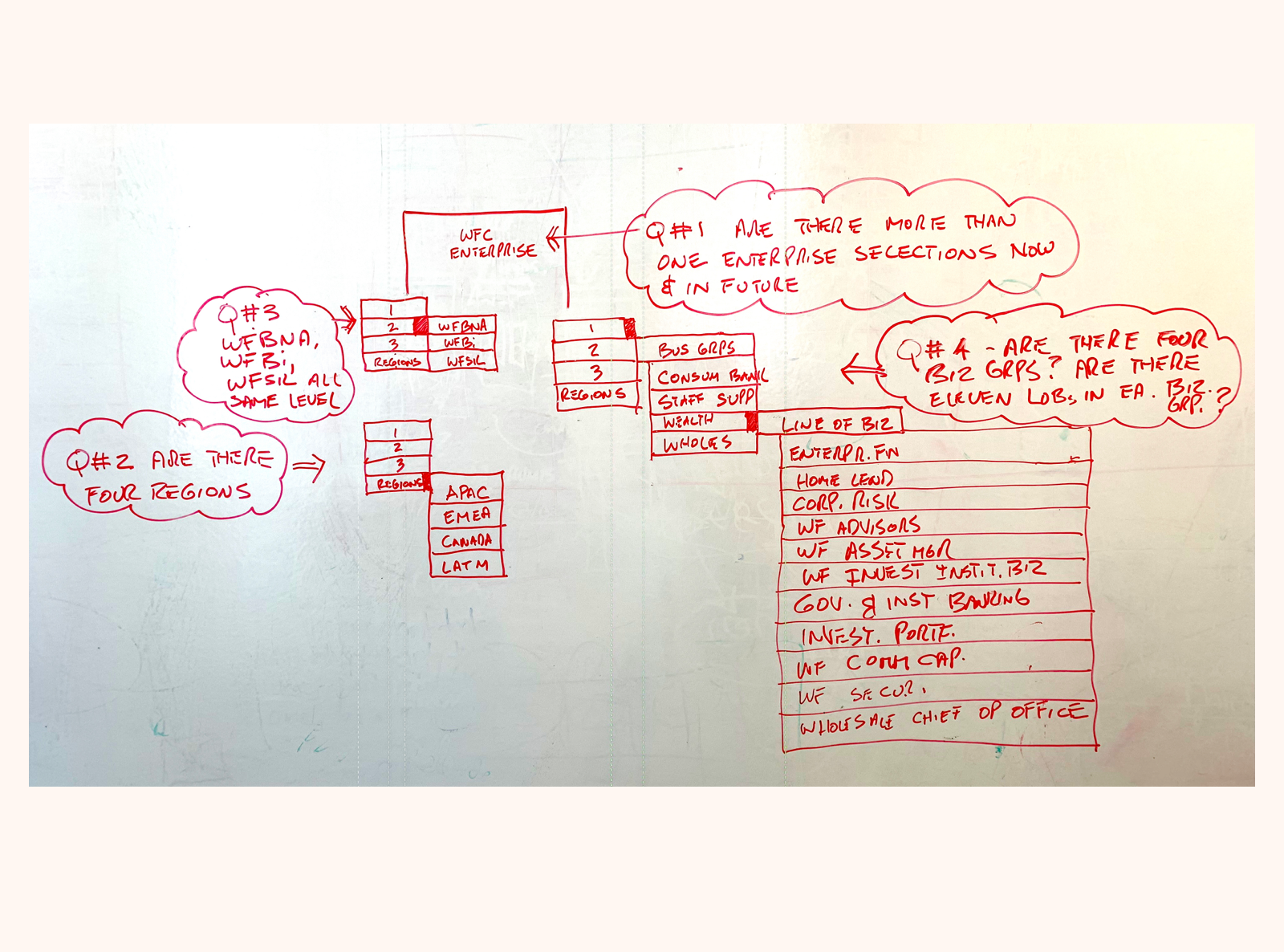Wells Fargo
Redesigning Wells Fargo’s Risk System for Efficiency and Accuracy

Overview
Wells Fargo needed to automate its risk management process to simplify workflows, improve compliance tracking, and ensure accurate data management. The goal was to replace the existing manual system with a streamlined, automated platform that enhanced efficiency, transparency, and oversight across all risk-related workflows.
Problem
The risk management system lacked efficiency, leading to delays, inconsistencies, and increased operational risks. Document tracking, compliance checks, and data integrity relied on manual processes, making them error-prone and time-consuming. Without automation, maintaining governance standards and conducting timely risk assessments was challenging, emphasizing the need for a streamlined solution.


insights
To fully understand the pain points and optimize the solution, I conducted extensive research using card sorting, hierarchy analysis, usability testing, qualitative testing, A/B testing of granular workflow issues, and UX research. Additionally, I worked closely with the business team in San Francisco to align the solution with the provided business requirements document.
Key insights included:
- SORA (Statement of Risk Appetite) documents needed simplification and a progressive disclosure approach to avoid overwhelming users.
- Tracking document edits and changes needed to be more transparent, associating specific people with different documents and their timelines.
- Compliance relationships with SORA documents had to be clearer and easier to navigate to ensure proper risk assessment and governance.


Solutions
To address these insights, we implemented a default template system for different types of SORA and risk management documents, significantly streamlining the document creation and management process. The new system introduced automated workflows, progressive disclosure for complex data, and improved tracking features to enhance compliance and collaboration.


Testing
Once possible solutions were proposed, I vetted them with the design team, product managers, and business stakeholders to align on a clear direction. From there, I created multiple prototypes and conducted real-time usability tests, comparing new designs to baseline benchmarks from the existing system.
Key findings showed that the progressive disclosure approach made complex data easier to digest, reducing cognitive overload. Automated workflows and default templates significantly improved task efficiency. Compliance tracking and user association with document changes became clearer, reducing confusion and errors.


challenges
The biggest challenge was aligning diverse stakeholders, including product managers, bank officers, business department leaders, and engineers. Each group had different priorities and concerns, requiring a structured approach to collaboration and decision-making. Through consistent communication, presentations, and iterative design discussions, I was able to get all teams aligned on a solution that balanced business goals, compliance requirements, and technical feasibility.


results
The new system delivered measurable improvements across multiple key metrics. Time to complete tasks improved by over 50 percent. Error rates were reduced by more than half. Usability and task success rates saw significant improvements. Net Promoter Score increased due to a better user experience.


conclusion
By automating risk management workflows, improving document tracking, and streamlining compliance processes, we successfully transformed an outdated, inefficient system into a modern, user-friendly, and scalable solution. This project highlighted the importance of collaborative UX research, stakeholder alignment, and data-driven decision-making in designing solutions that enhance efficiency and reduce risk at scale.
EPILOGUE
WHAT - The existing Wells Fargo risk management system was inefficient and error prone.
MAIN PROBLEM - The way risks were managed was slow and full of mistakes, causing delays. Tracking documents, following rules, and checking data had to be done by hand, making it time-consuming and error-prone. Without automation, it was hard to review risks on time and keep everything running smoothly.
PRIMARY SOLUTION - I designed a new Wells Fargo risk management system by first thoroughly mapping out and understanding the biggest pain points in the existing process. By breaking down these problems, I was able to sketch, test, prototype, and verify which new ideas actually worked. This structured approach ensured that the final system was more efficient, reduced errors, and met the needs of both the business and compliance teams.
HIDDEN PROBLEM - The biggest problem was that I couldn’t talk directly to the people who made the important business decisions. Instead, I had to get my information from other people, which made things slow and confusing. Because of this, important details got lost, making my job much harder.
SOLUTION - I made a system with the person who talked to the decision-makers. By showing him my steps and asking questions over time, I got better information. This helped me understand things more clearly and do my job better.
FRAMEWORK - Eight-Step Framework for Extracting Key Information
- Identify the Problem – Ask clear questions about the main issues the business is facing.
- Understand Key Features – Find out what critical features are needed to solve these problems.
- Review Existing Processes – Learn how things are currently done, including templates and risk profiles.
- Break It Down – Ask smaller, focused questions instead of overwhelming with too much at once.
- Clarify with Examples – Use real-world scenarios to make sure the information is accurate.
- Verify Assumptions – Double-check what you learn to avoid misunderstandings.
- Refine Over Time – Spread out questions over multiple conversations to get deeper insights.
- Adapt and Improve – Adjust based on new information to make the process even clearer.
By following these steps, I was able to gather the right information, even though I couldn’t speak directly to decision-makers. This structured approach made sure I got useful details without confusion.

